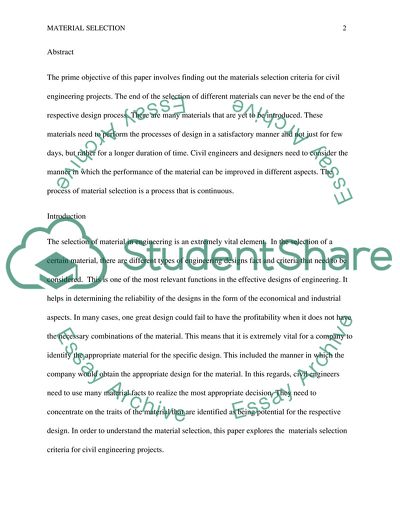Cite this document
(Materials Selection Criteria for Civil Engineering Projects Coursework Example | Topics and Well Written Essays - 1750 words, n.d.)
Materials Selection Criteria for Civil Engineering Projects Coursework Example | Topics and Well Written Essays - 1750 words. https://studentshare.org/engineering-and-construction/1827010-materials-selection-criteria-for-civil-engineering-projects
Materials Selection Criteria for Civil Engineering Projects Coursework Example | Topics and Well Written Essays - 1750 words. https://studentshare.org/engineering-and-construction/1827010-materials-selection-criteria-for-civil-engineering-projects
(Materials Selection Criteria for Civil Engineering Projects Coursework Example | Topics and Well Written Essays - 1750 Words)
Materials Selection Criteria for Civil Engineering Projects Coursework Example | Topics and Well Written Essays - 1750 Words. https://studentshare.org/engineering-and-construction/1827010-materials-selection-criteria-for-civil-engineering-projects.
Materials Selection Criteria for Civil Engineering Projects Coursework Example | Topics and Well Written Essays - 1750 Words. https://studentshare.org/engineering-and-construction/1827010-materials-selection-criteria-for-civil-engineering-projects.
“Materials Selection Criteria for Civil Engineering Projects Coursework Example | Topics and Well Written Essays - 1750 Words”. https://studentshare.org/engineering-and-construction/1827010-materials-selection-criteria-for-civil-engineering-projects.


